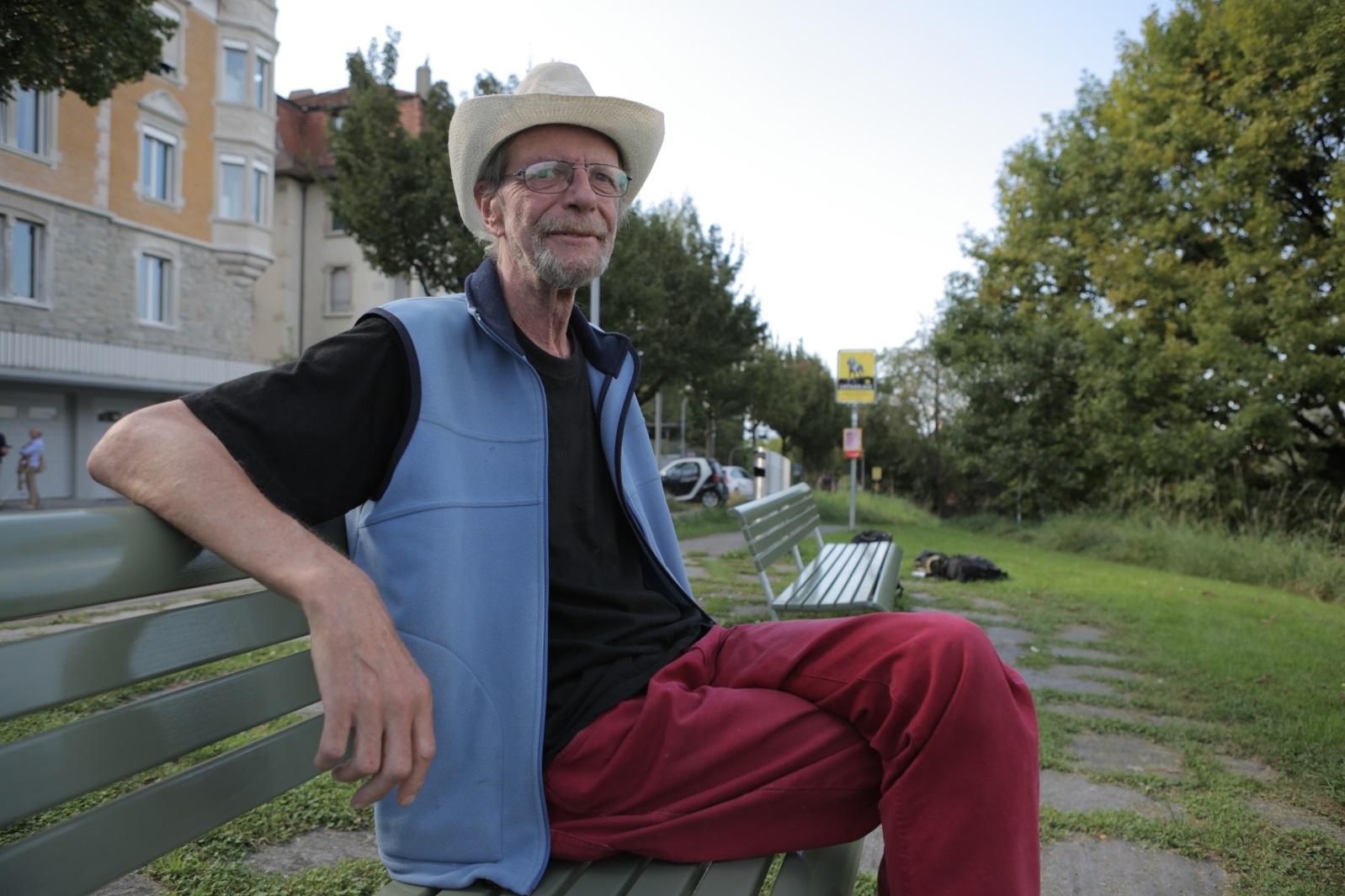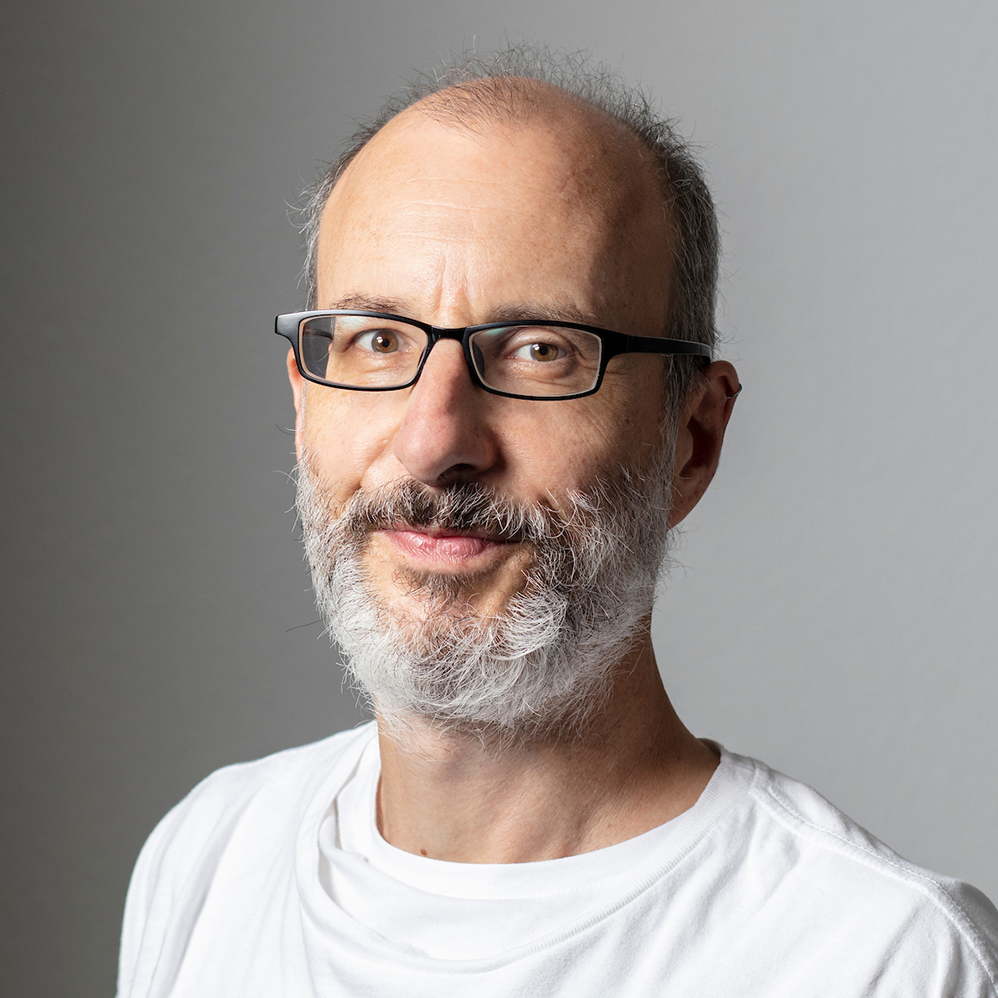
Broke and homeless on the streets of Zurich

Switzerland may be one of the richest countries in the world, but almost 600,000 Swiss live below the poverty line. Niggi Schwald spent years among the homeless of Zurich. Now he shows visitors the hidden face of the city.
In Zurich, on a September afternoon, it’s not raining and the temperature is quite pleasant. For Niggi Schwald, a park bench would be a fine way to spend the night. He would find a quiet place, far away from the city centre. “I don’t like to wake up too early in the morning,” he says.
The 66-year-old knows his city well. He especially knows its dark side: the world of the poor and marginalised. For four years the streets of Zurich were his home. He recalls his life as a hobo without embarrassment, because, in fact, he adopted the homeless lifestyle by choice.
Surviving on the street
A sleeping bag, a bed roll and a rucksack with a few clothes –Schwald did not own much more than that when he ended up on the streets. It was 2005, and he had found refuge in an abandoned hay cart under a railway bridge, on the outskirts of the city. “I’ll never forget the cold winter nights. I used to light a fire, but it wasn’t enough,” he recalls.
Without a cent in his pocket, Schwald begged in the most strategic locations: in front of the railway station, outside shops or at tram stops. A good day would net him CHF50 ($52). His approach was not to look too unkempt and above all to be polite.
When it rained or was cold, there was always the shopping centre. This was a comfortable place not far from his bolt-hole, and one Schwald regarded as a “living room” to spend the daytime. There was always someone ready to buy him a cup of coffee and a slice of pie. A staff member let him have the key to the toilets. There he could clean up and wash his clothes.
The one preoccupation that never left him was food. In summer, he got something to eat in return for helping farmers in the fields. But in winter, he often filled his stomach with water from fountains when he didn’t fancy going to the soup kitchen downtown. In Switzerland, he is at pains to point out, no one dies of hunger, and if a person needs a meal it can always be found somewhere.
Like the Suneboge community centre, which is a lifesaver for dozens of homeless people. A former prison close to the Swiss Stock Exchange, it provides cheap, hot meals – but not just that.
A million poor and at risk
In Switzerland, poverty affects 7.7% of the population, according to recentExternal link figures from the Federal Statistical Office. This means that about 590,000 people do not have enough income to provide for their own subsistence (food, clothing, transportation), a place to live, and legally required health insurance. Many of these people in fact have jobs.
If we include those who live at the margins just above the poverty line, we get over the million mark, according to data from the charitable organisation Caritas. One person in five is not able to cope with an unexpected expense of CHF2,000 such as a dentist’s bill, says the organisation in its new handbook of poverty in SwitzerlandExternal link, which came out this year.
The groups most at risk are single-parent families, adults living alone, people with no more than basic schooling, and homes where there is no breadwinner. Schwald does not belong to any of these categories. And yet, he found, “it didn’t take much to descend into poverty”.
Before ending up on the street, the Basel native was married. He worked at a construction firm and had a monthly salary of about CHF7,000, so he had nothing to complain about. But there was a divorce, a build-up of stress at work – “I was trying to do too much” – and the bankruptcy of the firm was the last straw.
It can happen to anybody, insists Schwald, even people who have known a life of ease in high society. Like Mike, a one-time insurance executive who used to travel the world, and who now has to rent a small room at the Suneboge community centre.
The weight of loneliness
Schwald counts himself lucky. Apart from a beer or a glass of wine when he could scrape together enough money, he never got into alcoholism or drug addiction.
What helped him most was his personal strength. “I never lost my sense of humour, because I kept telling myself that things couldn’t get any worse.” Schwald didn’t blame the authorities or society. He knew that he could access social welfare – he was entitled to it. But he remembers that the bureaucracy, the paperwork and meetings with government officials put him off. It was all too much of a hassle, and he preferred to avoid it.
So Schwald chose to live on the streets. The homeless lifestyle has no rules and a person can feel free, he says. This freedom has its price, however. “I lacked contacts and a social life. The loneliness was the hardest thing to take.”
For that reason, he explains, you often see a homeless person with a dog or other pet. These are more than just companions in misfortune.
A walk on the dark side
Schwald never had any animals himself. He was all alone on a December night in 2009, when, lying in his cart, he said: “That’s it”. “I told myself that I did not want to spend another freezing night outside.” The next morning he went to a church institution for the poor, and from that point his life changed.
Today, Schwald lives in a rented room in Zurich. He is on the board of a theatre group that involves street people. Where he can, he helps out at a number of organisations for the poor and his appointment book, he notes wryly, now “looks like a businessman’s”. His pension of CHF1,700 is enough. For Schwald, “money is important, but not as much as human warmth and social contacts”.
To do something about the isolation of the poor, Schwald has gone back to the street – this time to organise a “socially aware” tour ofExternal link the city. This is a guided tour of Zurich with a difference. In the space of a couple of hours, it reveals the daily life of those who are on the outside looking in.
The idea is to take people around soup kitchens, homeless shelters and drug addiction facilities, the kind of places that people usually avoid or don’t even notice, says Schwald. “It’s not like a trip to the zoo,” he cautions, but a way to break down prejudice.
There is only one place he is unable to show people: the railway bridge where he used to sleep. The cart is no longer there, and in its place there is now a tram line. Too bad, says Schwald with a sigh. In spite of everything, he has some fond memories.
The first “socially aware” downtown tours in Switzerland were organised in Basel by SurpriseExternal link, an association to integrate marginalised people. The aim of the project was twofold: to show another perspective of the city centre, and to give a role to the homeless and marginalised themselves as tour guides. The initiative, which is inspired by a similar idea in Germany, was started in April 2013. So far it has drawn 5,500 people. Thanks to the preparatory work and contacts of Niggi Schwald, the idea is now being trialled in Zurich. The first tours, which last around two hours, started on October 3. Soon it will be Bern’s turn.
(Translated from Italian by Terence MacNamee)

In compliance with the JTI standards
More: SWI swissinfo.ch certified by the Journalism Trust Initiative
































You can find an overview of ongoing debates with our journalists here . Please join us!
If you want to start a conversation about a topic raised in this article or want to report factual errors, email us at english@swissinfo.ch.